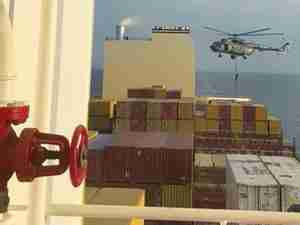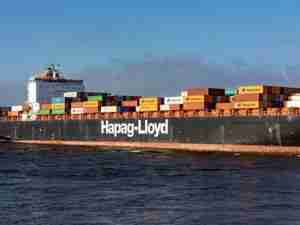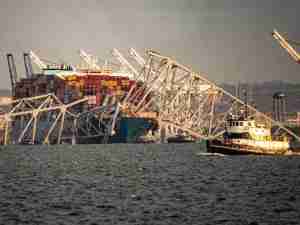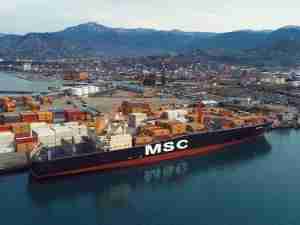Through cooperation and creativity, container shipping lines, their vendors and their customers avoided a repeat of the peak season congestion seen in 2004. A gradual easing of cargo volumes accounts for only a small part of the relatively peaceful summer seen at US ports and along key inland rail corridors this year. Better planning and communication, spreading out shipments, diversified port gateways, extended Southern California gate hours and rail and port terminal technology improvements all played major roles in smoother traffic growth.
Still, trans-Pacific lines remain concerned about system-wide throughput even after having introduced new Northwest and all-water East Coast services, Oakland first calls, terminal and equipment management upgrades, transload and origin distribution center services, and more. Carriers report that inland rail delays of 1-5 days are still common on key routes; driver shortages continue to narrow both shorthaul and longhaul trucking options; and Panama Canal congestion and delays ' along with higher rates and booking fees ' are still a fact of life. These and other factors, in combination, are expected to reduce effective capacity of new, larger ships entering service in 2006.
Asia-US cargo demand, meanwhile, remains on track with projections of 10-12% annual growth made earlier this year: First quarter 2005 growth was just short of 11% over the first three months of 2004. First half growth, encompassing both the lunar new Year and Golden Week holidays in Asia, was 2.70 million 40-foot containers (FEU), 9% above the first half 2004 total of 2.48 million FEU.
Member lines in the Transpacific Stabilization Agreement (TSA) say they expect to see healthy utilization numbers, even with added vessel capacity on the way. In upcoming contract discussions they will be seeking rate increases reflecting structural changes in the market that have led to sustained higher volumes, service requirements and costs. Lines have also announced an extension of peak season surcharges for East Coast all-water service through January 31, 2006. That segment of the market is expected to run at full capacity through early 2006 and will entail higher round-trip sailing costs than port-to-port or intermodal West Coast service.
"We have a peak season, ships are running at 90-95% full, cargo is moving," TSA executive director Albert A. Pierce points out. He adds that the two negatives in the equation ' cargo imbalances and costs ' have been present in past years as well. "Carriers met shipper expectations during 2005," he says. "They delivered the new Northwest and all-water East Coast services customers requested, and improved transit time and schedule reliability at a time of near-record vessel charter costs; a 60% increase in Panama Canal round-trip transit costs; a ratio of eastbound equipment and loads to westbound of 2.5 to 1; significant carrier investment in shoreside terminals; and empty containers making up a third to half of total throughput at major ports. All of these components make cost recovery the top priority for carriers in 2006-07."
TSA lines are currently working on internal cost analyses that will produce a rate program for the 2006-07 service contract negotiation season sometime in late October. "The first commitment of the member lines is maintaining adequate capacity and service levels as needed by the customer base," Pierce explains. "Then the carriers step back, assess how they performed, and measure actual costs against initial projections in preparation for the coming year. It's already clear that some catching up is necessary on the cost side." Member lines are confident, he adds, that a still robust market should be able to support a new round of rate adjustments aimed at cost recovery.









